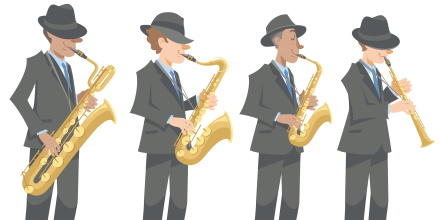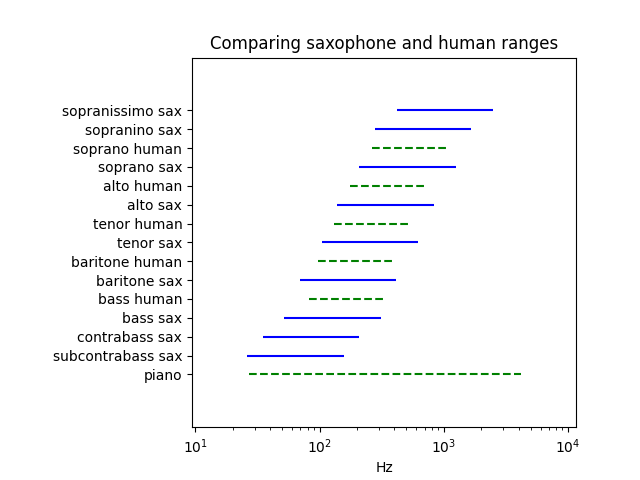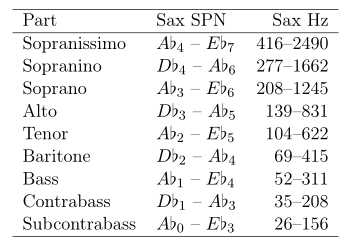
I stumbled on a recording of a contrabass saxophone last night and wondered just how low it was [1], so I decided to write this post giving the ranges of each of the saxophones.
The four most common saxophones are baritone, tenor, alto, and soprano. These correspond to the instruments in the image above. There are saxophones below the baritone and above the soprano, but they’re rare.
Saxophones have roughly the same range as the human vocal parts with the corresponding names, as shown in the following table.

SPN stands for scientific pitch notation, explained here. Hz stands for Hertz, vibrations per second.
The human ranges are convenient two-octave ranges. Of course different singers have different ranges. (Different saxophone players have different ranges too if you include the altissimo range.)
If you include the rare saxophones, the saxophone family has almost the same range as a piano. The lowest note on a subcontrabass saxophone is a half step lower than the lowest note on a piano, and the highest note on the sopranissimo saxophone is a few notes shy of the highest note on a piano.
Update
My intent when I wrote this post was to add some visualization. One thought was to display the data above on a piano keyboard. That would be a nice illustration, but it would be a lot of work to create. Then it occurred to me that what putting things on a piano is really just a way of displaying the data on a log scale. So I plotted the frequency data on a log scale, which was much easier.

More saxophone posts
[1] I could figure it out in terms of musical notation—you can see what a regular pattern the various saxes have in the table above—but I think more in terms of frequencies these days, so I wanted to work everything out in terms of Hz. Also, I’d always assumed that tenor saxes and tenor voices have about the same range etc., but I hadn’t actually verified this before.


Comments are closed.